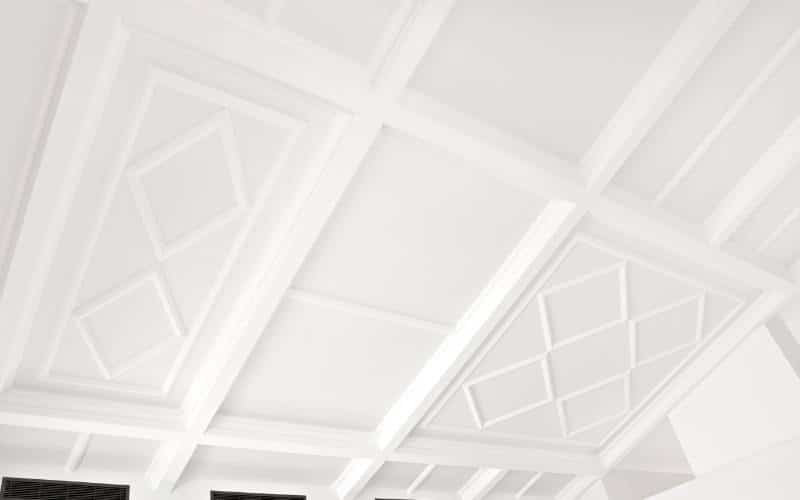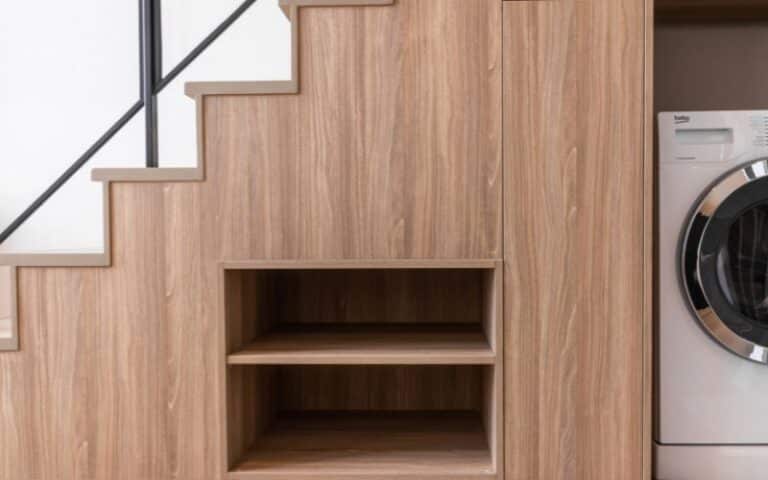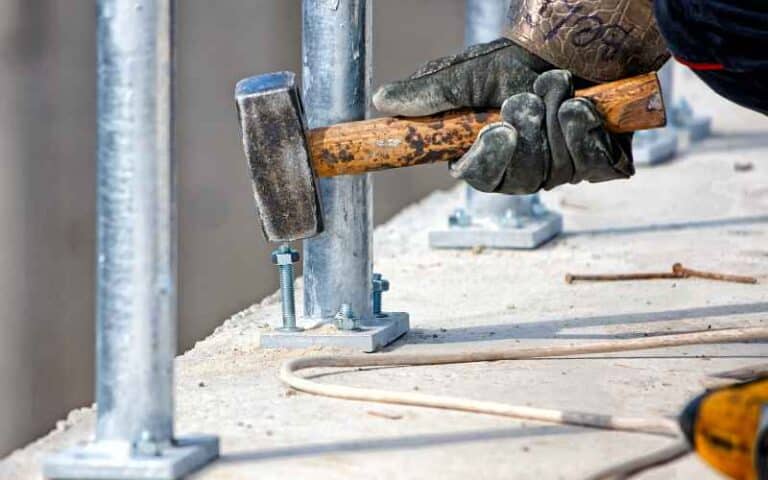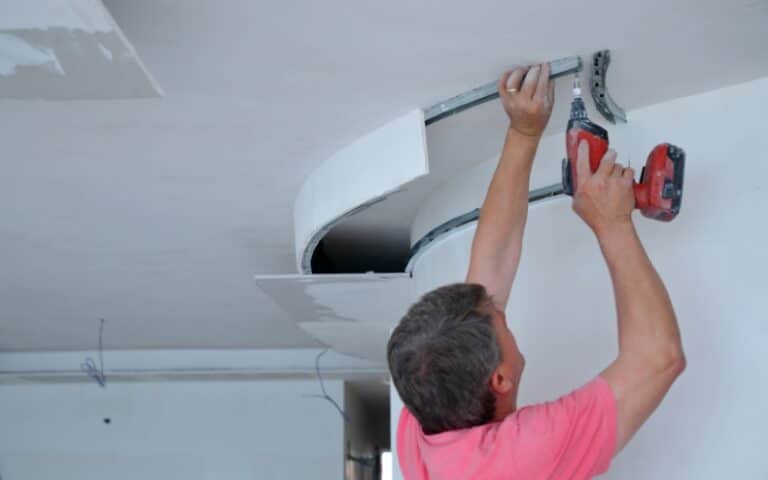Drywall installation is one of the crucial steps in the process of constructing or renovating a room.
So, when it comes to installing drywall, there’s often debate about installing the ceiling or walls first.
While drywall installation is quite an easy task, you must follow some necessary instructions to achieve better results.
Meanwhile, while both approaches might have their benefits, there is an ideal approach that professionals recommend. Hence, why do you drywall the ceiling first?
It’s best to install drywall on the ceiling before the walls. It provides additional support and creates a consistent, seamless finish as the drywall installed on the wall afterwards aligns perfectly with the installed drywall ceiling. It also makes your work easier and faster because you start it from the top.
In this article, I will explain why people first drywall the ceiling. I will walk you through the ideal sequence recommended for drywalling a room.
Additionally, I will explain if it’s okay to use the same drywall thickness for walls and ceilings.
And by the end, you will discover how to drywall your room correctly.
Ready for a Drywall Quiz?
What’s the Sequence for Drywalling a Room?

While drywalling a room is essential, following some crucial instructions is essential to achieve a successful finish.
Therefore, below is the ideal sequence for drywalling a room.
#1. Preparation:
First, ensure the room is cleared of all furniture and debris.
In addition, cover floors and any remaining fixtures with drop cloths or plastic sheeting, and prepare the drywall sheet for the ceiling.
#2. Measure and Cut:
Measure the length and height of each wall and mark the measurements on the back of the drywall sheets.
Use a straightedge or T-square to draw lines across the drywall where you will make the cuts.
#3. Install Drywall on the Ceiling:
The next step is to start by hanging the drywall on the ceiling, beginning at one corner of the room.
Use drywall screws to attach the sheets to the ceiling joists. Cut and fit smaller pieces as needed.
#4. Install Drywall on the Walls:
After the ceiling is complete, move on to the walls. Start with one corner and work around the room, attaching the drywall sheets to the studs with drywall screws.
Use a drywall lift or have a helper hold the drywall in place while you attach it.
#5. Cut-out Openings:
Use a drywall saw or rotary tool to cut out openings for electrical outlets, light switches, and other fixtures.
#6. Tape the Joints:
Once all the drywall is installed, use drywall tape to cover the seams where the sheets meet.
Apply joint compound over the tape with a putty knife, smoothing it out to create a flat surface.
#7. Sand:
Use a sanding sponge or drywall sander to smooth out rough spots after the joint dries.
Apply another coat of joint compound and repeat the sanding process until the surface is completely smooth.
#8. Apply Finishing Coats on the Walls:
Apply a coat of primer to seal the drywall and prepare it for paint or wallpaper. Allow the primer to dry completely before applying your chosen finish.
Regardless, it’s worth noting that the specific sequence may vary depending on the particular room and situation.
It is advisable to follow best practices suitable for your room for safety, including wearing protective gear and following manufacturer instructions for all tools and materials used.
Does It Matter Whether You Drywall the Ceiling Before the Walls?
Whether you drywall the ceiling before the walls to achieve better results matters.
Several professionals recommend installing the drywall on the ceiling before the walls, as this can help ensure a level and seamless installation.
In addition, starting drywalling from the ceiling can be more physically demanding, so completing the ceiling first can make the wall installation process easier and faster.
In contrast, a few professionals prefer to start with the walls first, particularly if multiple walls are installed.
This approach can help establish a framework for the room and make manoeuvring the drywall sheets easier.
However, the sequence of installing drywalls in your building may also vary depending on personal preference, access, and the specific requirements of the building.
However, it is advisable to prepare properly before the installation.
Also, ensure that you do any necessary framing, electrical, or plumbing work before installing drywall, regardless of the approach you intend to follow.
Check the table below for the pros and cons of installing drywall on the ceiling before the walls.
| Pros | Cons |
|---|---|
| It can create a smooth and seamless finish. | It requires scaffolding/ladder. |
| It can improve insulation. | Hanging lighting fixtures can be challenging. |
| It can reduce soil transmission. | It may limit access to plumbing, HVAC, or ductwork. |
| It creates room to start working from the top to make drywalling easier and faster. | It requires extra care when working around corners and edges. |
| It reduces damage and cracks in the walls. | It may require professional installation to achieve optimal results. |
What Happens If You Drywall the Walls First?
If you drywall the walls before the ceiling, the ceiling drywall installation can create some damage or disturbance to the wall drywall, which can require additional repair work.
For instance, if you install the ceiling drywall before the walls, there may be some shifting or movement of the ceiling drywall that can cause cracks or damage to the wall drywall.
Also, suppose the ceiling drywall is cut or trimmed while installed.
In that case, there is a risk of the drywall dust and debris falling onto the wall drywall, creating a messy and time-consuming cleanup process.
Another potential issue with installing the wall drywall after the ceiling is that it can be more difficult to cut it accurately to fit flush against the ceiling.
This approach can result in gaps or uneven surfaces between the wall and ceiling, which can be difficult to correct after the fact.
Therefore, installing the ceiling drywall before the walls is best to avoid these problems.
Ensure that the drywall is securely in place and that you do any necessary trimming or cutting before installing.
This approach will help to ensure a smoother and more efficient installation process, with fewer issues and less need for repairs or adjustments.
Can You Use the same Drywall Thickness for Walls?
Yes, you can use the same drywall thickness for walls and ceilings.
Using the same drywall thickness for walls and ceilings in most residential and commercial applications is common practice.
Most professionals use the most common drywall thickness for walls and ceilings is 1/2 inch.
This thickness suits most interior walls and ceilings and provides adequate structural support and sound insulation.
However, in some cases, you may need to use thicker drywall for ceilings if you want to add additional insulation or if you want to reduce sound transmission from above.
In these cases, you can use 5/8-inch drywall.
Still, the decision to use the same or different thicknesses of drywall for walls and ceilings will depend on the specific requirements of the building.
Meanwhile, if you are still determining which drywall to use for your building, it would be better to contact a professional contractor because choosing the correct drywall thickness is essential.






